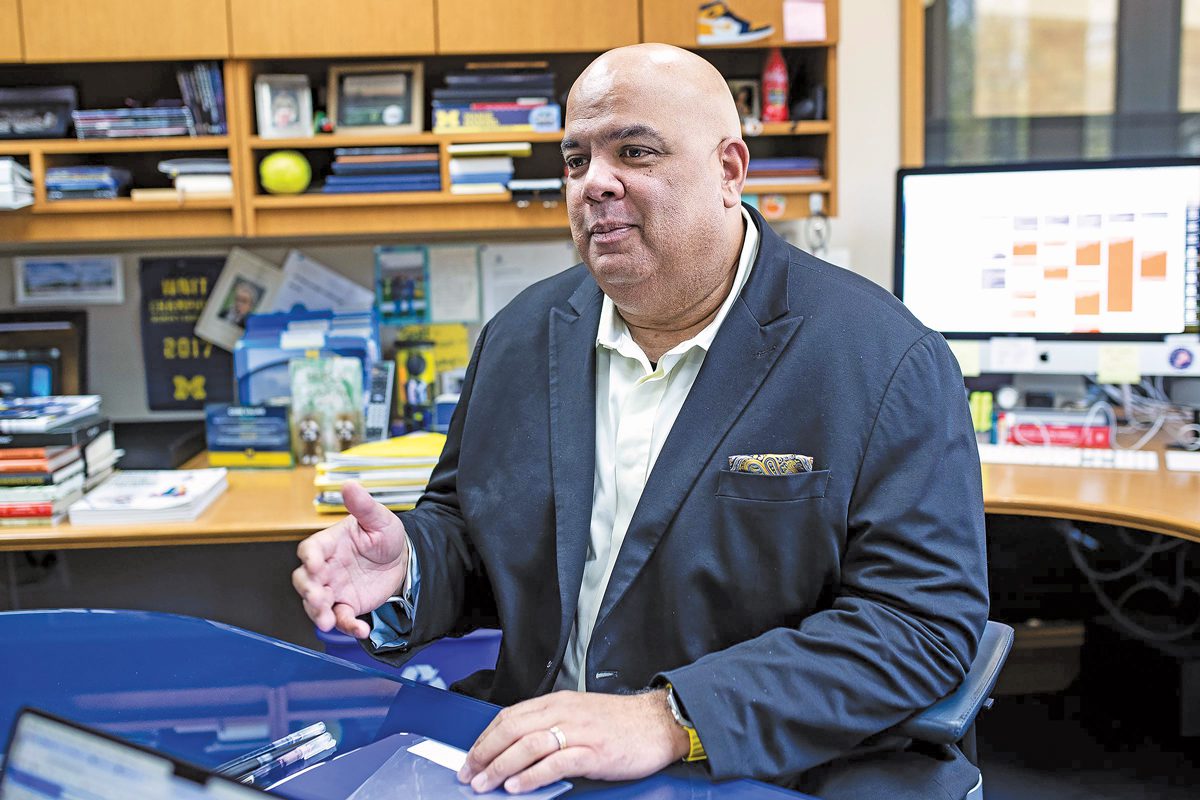NIL
Warde Manuel in the NIL Era
“Ninety-five plus percent of our student athletes are not going to play professionally when they are done here,” Manuel says. “So, if that’s the case, I’m not going to design a system for only five percent. I want a system that will help one hundred percent of them.” 19
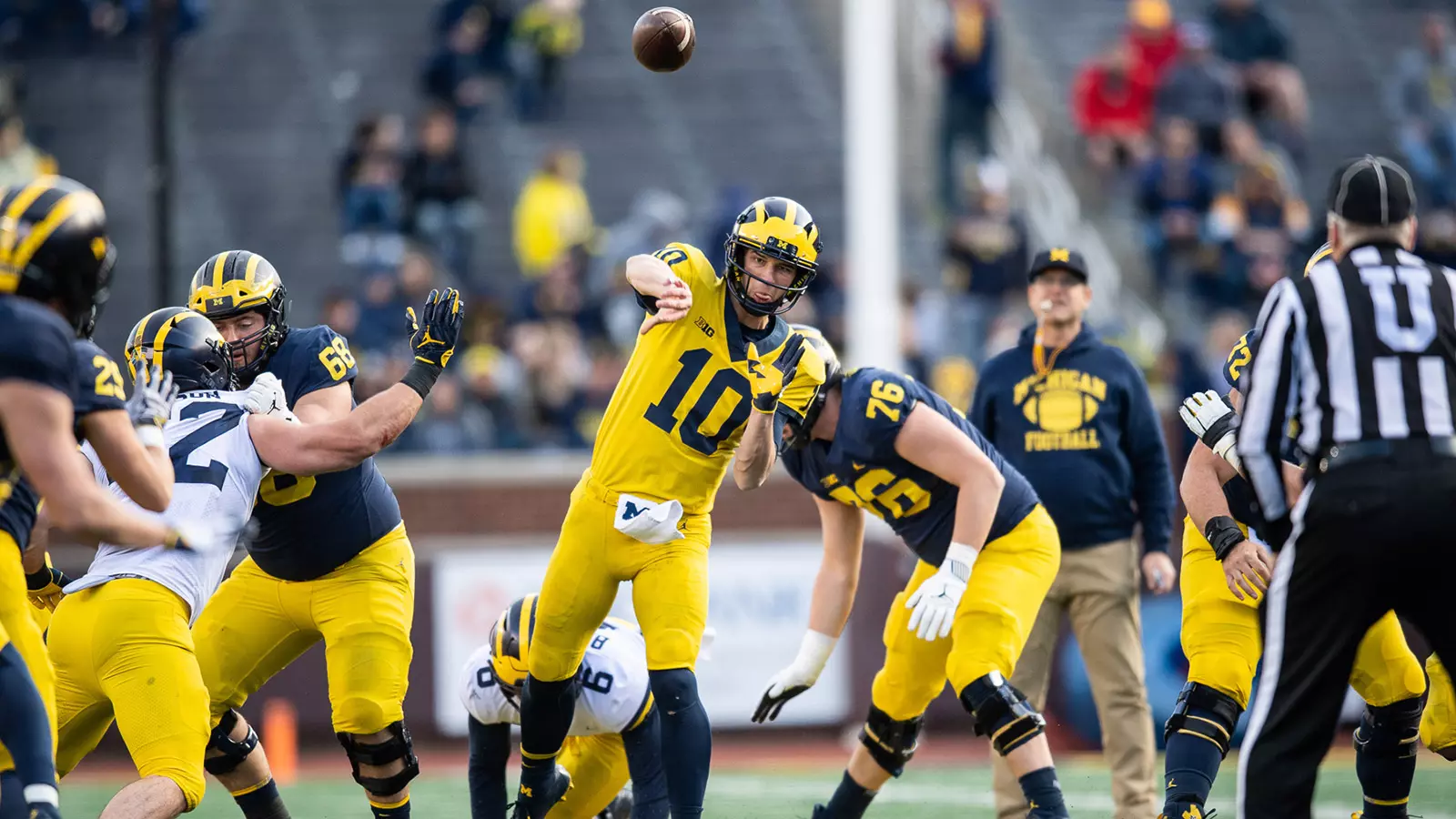
NIL
Draft Intel Dump and Maximizing the New College Landscape With Steven Ashworth
The Ringer‘s Tate Frazier talks about what he is hearing regarding NBA draft rumors and combine week (1:39), before talking with former Creighton and Utah State guard Steven Ashworth about playing in the new Big East, watching the college basketball landscape shift over the past five years, pitching his own NIL deals, his relationship with […]
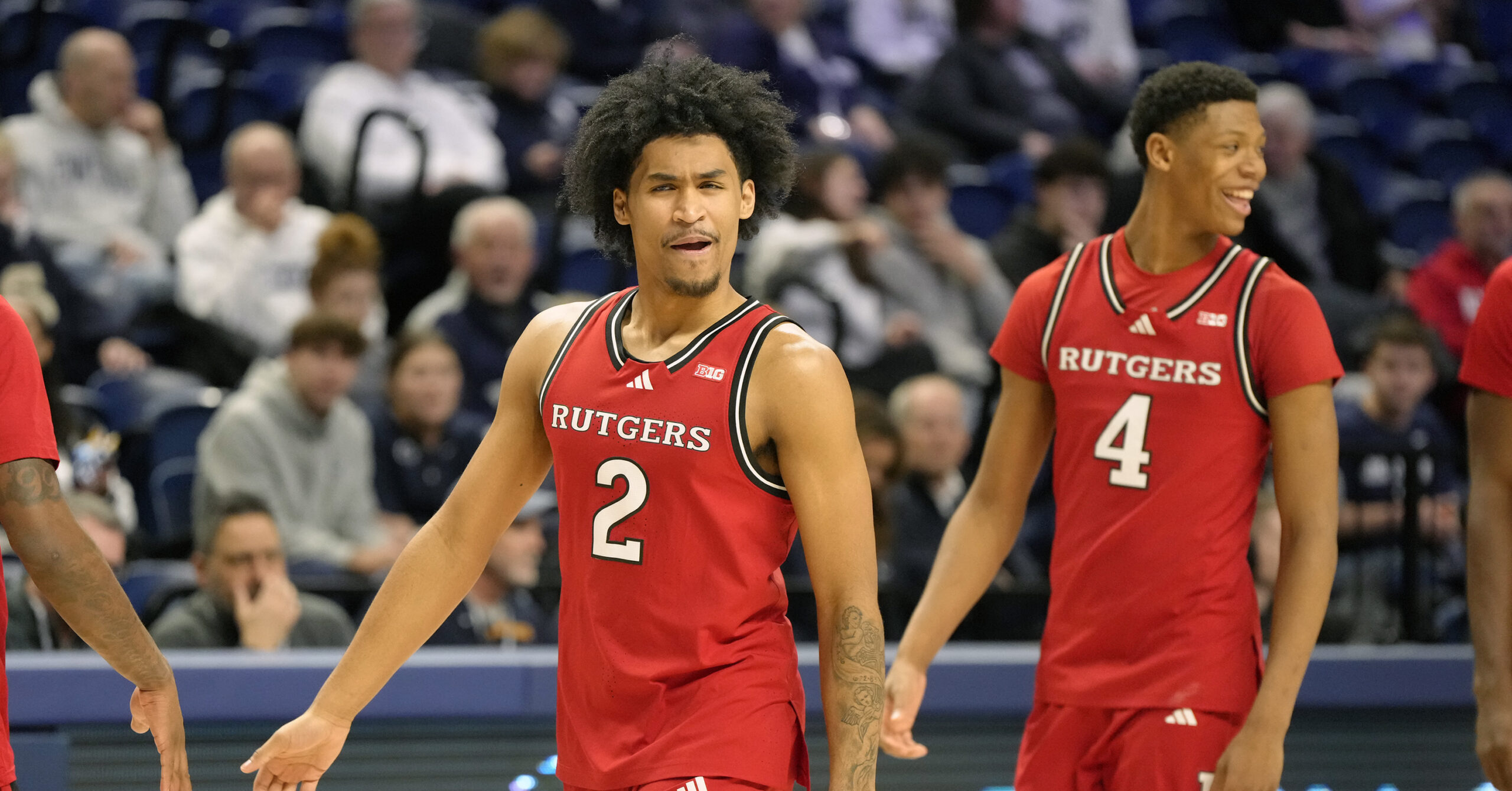
The Ringer‘s Tate Frazier talks about what he is hearing regarding NBA draft rumors and combine week (1:39), before talking with former Creighton and Utah State guard Steven Ashworth about playing in the new Big East, watching the college basketball landscape shift over the past five years, pitching his own NIL deals, his relationship with Ryan Kalkbrenner, Creighton’s 2025 tournament run, experiencing the NBA draft process, and more (15:30). Finally, Tate closes the show with some shout-outs, including some great news from Dick Vitale, Brad Underwood’s contract extension, and Will Wade grabbing headlines in Raleigh (37:25).
Host: Tate Frazier
Guest: Steven Ashworth
Producer: Kyle Crichton
NIL
North Texas head coach Rodney DeLong resigns
After seven seasons leading North Texas, head coach Rodney DeLong has resigned, Vice President and Director of Athletics Jared Mosley announced Friday. “We remain steadfast in our commitment to providing a positive and exceptional experience for our student-athletes and will work tirelessly to find the next head coach and leader of our program,” Mosley said. […]
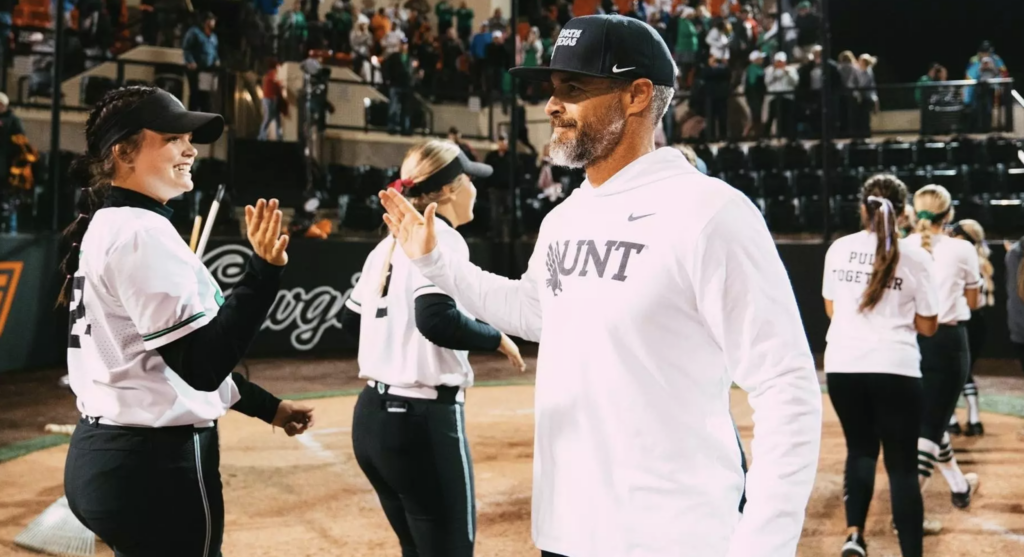
After seven seasons leading North Texas, head coach Rodney DeLong has resigned, Vice President and Director of Athletics Jared Mosley announced Friday.
“We remain steadfast in our commitment to providing a positive and exceptional experience for our student-athletes and will work tirelessly to find the next head coach and leader of our program,” Mosley said. “We have launched a nationwide search for the next head coach of our softball program. We will have no additional comment until a new coach is named.”
The news comes as a bit of a surprise after North Texas was part of the First Four Out for the NCAA Tournament. Delong was 232-119 while leading the Mean Green. DeLong was previously the head coach at Austin Peay and an assistant at Georgia Tech.
More from Softball America:
Ranking all 16 College Softball Regionals in terms of toughness
College Softball Regional Superlatives
Coaching Carousel Discussion Board
Transfer Portal Wire
NIL
Key legal developments in college athletics
The influence of name, image, and likeness (NIL) rights continues to push the boundaries of college sports in unprecedented ways. From the ripple effects of the transfer portal to the ongoing antitrust battles in federal court, nearly every aspect of college athletics is now touched by the high stakes of athlete endorsements – including pending […]
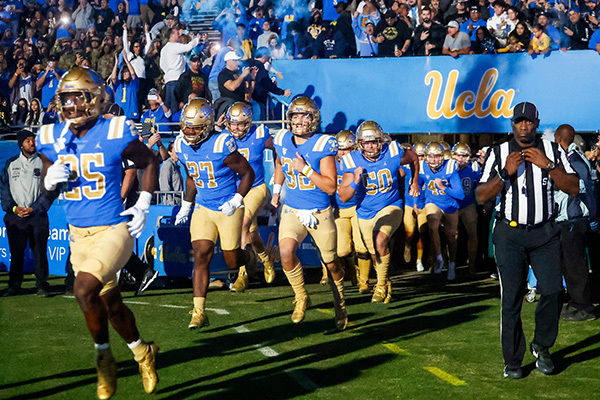
The influence of name, image, and likeness (NIL) rights
continues to push the boundaries of college sports in unprecedented ways. From
the ripple effects of the transfer portal to the ongoing antitrust battles in
federal court, nearly every aspect of college athletics is now touched by the
high stakes of athlete endorsements – including pending litigation and a
patchwork of NIL laws and guidelines.
As we approach the midpoint of 2025, let’s review the power
plays and upsets for NIL stakeholders and consider how sports lawyers can guide
our athletes through new and evolving regulatory hurdles.
The transfer portal and shifting power dynamics
New Division I transfer rule changes were implemented to make
transferring “more flexible and streamlined,” according to the National
Collegiate Athletic Association (NCAA). Key updates included earlier
portal access, one-time transfer exceptions, and stricter academic standards
(requiring a minimum 2.0 GPA) to maintain academic integrity. These changes also
eliminated restrictions on the number of transfers an academically eligible
athlete can make during their career, provided they remain in good academic
standing.
With
that in mind, remember the name Nico Iamaleava, as a
precedent or rule could soon bear his name. His departure from Tennessee to
UCLA marks a pivotal moment in the transfer portal era. Despite leading the
Volunteers to a College Football Playoff appearance in 2024, Iamaleava announced his move to UCLA via Instagram on April
20, following a failed attempt to renegotiate his NIL deal from $2.4 million to
$4 million. Iamaleava’s decision to leave due to
compensation disputes underscores the shifting power dynamics between athletes
and programs. Notably, his move to UCLA-reportedly for a lesser NIL
deal-coincides with his younger brother, Nico, also transferring to UCLA. These
events signal a trend where top players may prioritize personal factors over
financial gain, potentially reshaping future transfer decisions and NIL
strategies.
In 2025,
with his transfer to UCLA, Nico Iamaleava will still
be considered a redshirt sophomore, as he has three years of eligibility
remaining under the NCAA’s five-year
clock rule.
The
growing influence of NIL negotiations on player movement has further
repercussions. At UCLA, Nico Iamaleava is expected to
take on the starting quarterback role for the 2025 season, signaling the
departure of Bruins quarterback Dermaricus Davis, a
four-star recruit ranked as the third-best QB prospect from California in the
2024 recruiting class. This high-profile move highlights the volatility of the
college landscape, as coaches seeking to build a legacy may now face new risks
and rewards when connecting with marquee players they did not recruit.
Eligibility rules, legal challenges and antitrust implications
NIL deals and antitrust laws are also influencing player eligibility. In an April court decision
involving Jett Elad, a 24-year-old Division I transfer to Rutgers University, a
U.S. district judge granted a preliminary injunction allowing Elad to continue
playing for the Scarlet Knights in the fall, despite having exhausted his NCAA
eligibility.
U.S. District Judge Zahid N. Quraishi concluded that NCAA
eligibility rules – which limit athletes to four seasons of intercollegiate
competition, including junior college seasons – are problematic under antitrust
law. Division I football players are part of a labor market and can secure
lucrative endorsement deals, using college football as a platform for the NFL.
“[The] injunction is potentially Elad’s only opportunity to
complete his Division I career and transition into the NFL,” wrote Judge
Quraishi.
The court’s injunction prevents the NCAA from declaring Elad
ineligible for the upcoming season, enhancing
his chances in the 2026 NFL draft. This legal decision may also spark
further discussion about the evolving nature of college sports and their
increasing resemblance to professional leagues or minor league systems.
The House settlement: Roster limits and revenue sharing
The interconnectedness of eligibility, the transfer portal, and
the billions of NIL dollars at stake all hinge on the pending settlement in House v. NCAA.
House v. NCAA is a federal class action antitrust lawsuit
filed in the Northern District of California by college athletes against the
NCAA and major conferences (ACC, Big Ten, Big 12, Pac-12, and SEC). The
plaintiffs allege that NCAA rules unlawfully restricted athletes from earning
NIL compensation, thus violating antitrust laws. The settlement also
encompasses related cases, including Hubbard v. NCAA and Carter v.
NCAA.
Senior District Judge Claudia Wilken has been presiding over the
settlement for months, meticulously reviewing every detail to ensure the new
rulebook is properly finalized. On April 23, 2025, she introduced a significant
obstacle that could jeopardize the agreement. Judge Wilken demanded that the
parties revisit the section of the proposed $2.8 billion settlement pertaining
to roster limits – a provision several schools have already begun to implement.
The NCAA currently limits the number of scholarships a team can
offer but does not restrict total roster size. For example, FBS football
programs are allowed 85 scholarships but typically carry up to 120 players,
including walk-ons. Under the settlement, new roster limits would cap the total
number of athletes per team, though exact figures have yet to be finalized.
This change is designed to control financial exposure for
schools, which under the settlement would share up to 22% of their athletic
revenue directly with athletes. Fewer roster spots would mean fewer athletes
splitting those funds. However, the proposal has drawn criticism for
potentially reducing opportunities for non-scholarship athletes, especially
walk-ons, and raising Title IX concerns if women’s sports face disproportionate
cuts or unequal revenue-sharing benefits.
Judge Wilken warned that unless these issues are addressed, the
court may withhold final approval of the $2.8 billion settlement, giving all
sides 14 days to contact their mediator and return to the bargaining table.
More hurdles to clear
These are just some of the many issues challenging the NCAA and
the state of college athletics. Until Congress establishes a federal framework,
this patchwork of rules will continue to govern athletic activity both on and
off the field.
Stakeholders need support with strategy and decision-making, and
sports lawyers can provide our athletes and schools with the guidance necessary
to ensure compliance. This will help maintain the integrity of college sports
and suggest innovative ways to move forward in this new, NIL-driven era of
athletic competition.
NIL
College athletes poised to receive pay
As soon as later this month, a landmark settlement in an NCAA antitrust case could be finalized, and schools, including Pitt, would dole out more than $20 million annually to players over the next decade. The change would go into effect on July 1. Key elements of the pending settlement $2.8 billion in backpay to […]
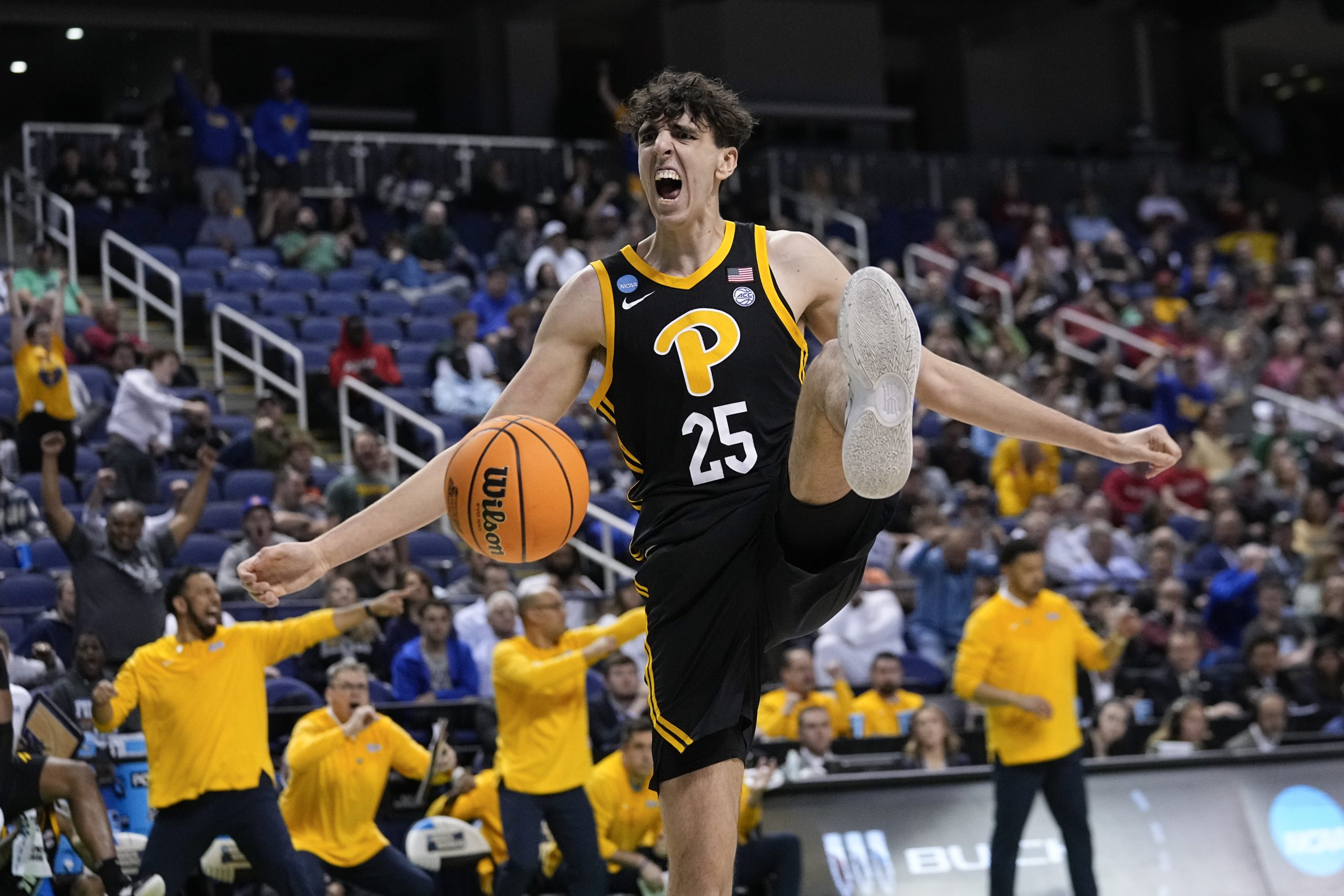
As soon as later this month, a landmark settlement in an NCAA antitrust case could be finalized, and schools, including Pitt, would dole out more than $20 million annually to players over the next decade. The change would go into effect on July 1.
Key elements of the pending settlement
- $2.8 billion in backpay to college athletes who played for Division I schools between 2016 to 2024
- $20.5 million paid to athletes by Power 5 conference schools in the first year, with yearly increases
- Scholarship limits replaced by roster caps
But, with an athletics department in the red and uncertain federal funding for research — a mainstay in Pitt’s budget — the source of that money is murky.
Some schools around the country have already instituted higher ticket and concession prices for games, while others are adding onto student fees to help foot the bill. Preparation for the payments has also led to already-enrolled athletes being cut from teams, and recruits committing to schools without clarity on next steps come the fall.
Pitt declined to answer specific questions about a funding and distribution plan for the multimillion-dollar payments, where the money would stem from and how recruiting may have been altered for the upcoming school year.
Why are colleges going to pay athletes?
Historically, colleges have avoided having to pay student athletes, characterizing them as amateurs rather than professionals. Karen Weaver, the author of a forthcoming book on university leadership and athletics, said this was feasible for years until college sports began to rake in big bucks.
“The amount of money pouring in at every level … just became intolerable, so athletes and their attorneys started pushing back,” said Weaver, an adjunct assistant professor at the University of Pennsylvania.
Enter a slate of lawsuits against the NCAA, which oversees athletics for more than a thousand colleges and universities. The $2.8 billion settlement could end the case of House v. NCAA, which was initially brought by a former college swimmer and evolved to include two other suits.
Experts told PublicSource that the settlement, which will allow colleges to pay athletes, was a less financially damaging choice for the organization than letting the cases play out in court.
However, colleges and universities in the Power Five conferences aren’t exactly in a prime position to help the NCAA cover the settlement cost, especially as they each prepare to find $20.5 million for their athletes.
Can Pitt afford this?
Revenue for most schools’ athletics departments doesn’t outpace expenses, including at Pitt.
According to financial disclosures submitted to the state, Pitt’s athletics department ended the 2023-24 school year with a $45 million deficit.
“The issue with college sports, as is true for most of our education, is we spend what we get and sometimes in college athletics, they spend more,” Weaver said. “So, more often than not, they’re running deficits.”
PublicSource reached out to Pitt with questions about the deficit and did not receive a response by publication time.
The settlement’s potential finalization would also arrive at a time when Pitt is battling critical financial concerns. Federal research funding cuts prompted Pitt in March to institute a hiring freeze that will last until the end of June, at a minimum. Research grants and contracts accounted for 39% of the university’s revenue in 2024.
“This is a real concern. The timing could not be worse,” Weaver said about the current higher education climate.
Solutions for finding the money range from cutting sports that aren’t generating enough revenue to acquiring loans through private equity, Weaver said. Despite the silence from administrators, she said with the settlement being potentially close to finalization, it’s likely that Pitt would have a plan or be close to one by now.
Would tuition increase?
One alum has been trying for months to figure that out. In February, Byron Fleck contacted university administrators requesting that the Board of Trustees add an agenda item to their next meeting. The San Jose-based lawyer attached a statement of support for a resolution that, if approved by the trustees, would promise that tuition, student fees and taxpayer money wouldn’t be used to pay Pitt’s athletes.
State law permits state-related universities, including Pitt, to use taxpayer money only to offset tuition costs for state residents. There have been no indications that the university plans to increase tuition or add student fees to pay athletes. Pitt did not answer a question about whether it intends to do so.
Since 2021, tuition at Pitt’s main campus in Oakland has increased every year. Last year’s increase was 2% for in-state students and 4% for out-of-state students. The university’s budget for the next school year, when athlete payments would begin if the settlement is approved, won’t be finalized until July.
Pitt Chancellor Joan Gabel and Board Secretary Philip Bakken both confirmed that Fleck’s request and statement were relayed to the trustees, according to emails shared with PublicSource. After this, Fleck said he was told there would be no further communication regarding the request. The board met on May 8 and the resolution wasn’t mentioned.
When asked why the board didn’t acknowledge the request for a resolution vote, a Pitt spokesperson said, “The Board of Trustees, through the Office of the Secretary, did acknowledge Mr. Fleck’s feedback and request. We thanked him for his feedback and repeatedly indicated that his communication had been shared with the board.”
In the absence of a vote, Fleck took to contacting Gov. Josh Shapiro, State Education Secretary Carrie Rowe and state Senate Majority Leader Joe Pittman and Minority Leader Jay Costa.
Costa, whose district includes Pitt’s Oakland campus and who serves on the Board of Trustees, reached out to the board to ask them to consider the resolution, according to an email from his district office director earlier this month.
Would players be paid equally?
The settlement will not detail which athletes are paid or how much, leaving the choice up to the individual schools. Most are expected to follow a plan that would see football and men’s basketball players receiving the bulk of the money since those sports tend to generate the most revenue.
Under that blueprint, football would get 75% of the funds, 15-20% would go to men’s basketball, 5-10% would go to women’s basketball and leftover money would be given to other sports. At Pitt, there is a slightly larger number of male athletes at 292 than female athletes at 235, according to the most recent federal data.
Experts told PublicSource they are expecting legal challenges related to Title IX, particularly if schools follow the football-heavy formula.
Title IX requires schools to provide equal financial assistance opportunities to men and women athletes. Before former President Joe Biden left office in January, he issued guidance spelling this out for the distribution of name, image and likeness [NIL] payments. The Trump administration rescinded this on Feb. 12.
Pitt did not answer a question about whether parity between men’s and women’s sports would be a factor in how athletes get paid.
How does NIL factor into this?
Student athletes are currently able to profit from outside NIL deals, a change that the NCAA allowed in June 2021. The settlement will not limit their ability to earn extra money on top of payments from schools, but there will be more regulation around deals. Those worth $600 or more will have to be made public.
Many players sign onto and are paid through school-specific NIL collectives, which are often organizations that accept donations to pay athletes for the likes of endorsements, social media posts, appearances and more.
Weaver called these collectives “loosely structured.” Pitt’s collective is Alliance 412 and was founded by alum Chris Bickell in 2022. Bickell, CEO of the Florida health tech company WellHive, donated $20 million to Pitt’s athletics department the previous year.
These collectives operate independently from the universities, but experts predict that many will be absorbed into athletics departments after the settlement is finalized.
Alliance 412 and the university’s department, though separate entities, already work in close collaboration. Last fall, Pitt football head coach Pat Narduzzi and Bickell decided to stop paying all players, instead compensating select ones.
“If you want sponsorships and want to be paid like a professional, you have to earn it,” Bickell said in an interview with Yahoo! Sports.
Could athletes unionize?
To Ohio University professor B. David Ridpath, there is only one clear path forward for Pitt once the settlement is finalized.
“It’s going to be difficult for them to be able to exist in any competitive balance with a Penn State, with a Notre Dame, with an Ohio State, unless there is some type of collective bargaining and unionization with the athletes, because then … you could level out the playing field a little bit more,” he said.
Ridpath, whose research focuses on sports governance in intercollegiate athletics, said unionizing would allow for salary caps and even spending, in part by eliminating recruiting costs. It would also ensure Title IX requirements are met, he said.
Student athletes have never been considered employees of the universities they play for, but receiving payment as part of the settlement’s conditions would call their status into question. Ridpath expects the settlement will open the door for lawsuits addressing this.
Details in the settlement are still being hammered out between the NCAA and athletes represented in the case, despite it having preliminary approval. If an agreement isn’t reached, the case goes to trial, and the financial blowback for the NCAA and its member schools could skyrocket.
Weaver isn’t sure what will happen, while Ridpath is more certain.
“I tend to think the settlement is going to get approved, but also I think, predict and rightly predict, that’s just the beginning,” he said.
Maddy Franklin reports on higher ed for PublicSource, in partnership with Open Campus, and can be reached at madison@publicsource.org.
This story was fact-checked by Ayla Saeed.
NIL
NCAA Softball Regional Scores and Updates
The road to Oklahoma City kicks off on Friday. Stay tuned all weekend as Softball America updates scores and times throughout the weekend. Softball America Regional Coverage: Ranking all 16 College Softball Regionals in terms of toughness2025 College Softball Regional SuperlativesFive unseeded college softball teams that can make the Women’s College World SeriesSoftball America Composite […]

The road to Oklahoma City kicks off on Friday. Stay tuned all weekend as Softball America updates scores and times throughout the weekend.
Softball America Regional Coverage:
Ranking all 16 College Softball Regionals in terms of toughness
2025 College Softball Regional Superlatives
Five unseeded college softball teams that can make the Women’s College World Series
Softball America Composite Analytics: NCAA Regionals
Every NCAA Tournament Team’s hottest hitter
1 Mid-Major Player to Know from Each Regional
The 10 most intriguing College Softball Super Regional pairings
2025 Softball America Bracket Challenge
Regional Discussion Board
Scores Page
Bryan-College Station Regional
- May 16
- Game 1: Marist vs. Liberty | 1 p.m. | ESPN+
- Game 2: Saint Francis vs. No. 1 Texas A&M | 3:30 p.m. | SEC Network
- May 17
- Game 3: Winner of Game 1 vs. Winner of Game 2 | 2 p.m. | TV TBD
- Game 4: Loser of Game 1 vs. Loser of Game 2 | 4:30 p.m. | TV TBD
- Loser eliminated
- Game 5: Loser of Game 3 vs. Winner of Game 4 | 7 p.m. | TV TBD
- Loser eliminated
- May 18
- Game 6: Winner of Game 3 vs. Winner of Game 5 | 4 p.m. | TV TBD
- Game 7 (if necessary): TBD vs. TBD | 6:30 p.m. | TV TBD
Norman Regional
- May 16
- Game 1: Omaha vs. California | 3:30 p.m. | ESPN+
- Game 2: Boston U vs. No. 2 Oklahoma | 6 p.m. | ESPNU
- May 17
- Game 3: Winner of Game 1 vs. Winner of Game 2 | 2 p.m. | TV TBD
- Game 4: Loser of Game 1 vs. Loser of Game 2 | 4:30 p.m. | TV TBD
- Loser eliminated
- Game 5: Loser of Game 3 vs. Winner of Game 4 | 7 p.m. | TV TBD
- Loser eliminated
- May 18
- Game 6: Winner of Game 3 vs. Winner of Game 5 | 2 p.m. | TV TBD
- Game 7 (if necessary): TBD vs. TBD | 4:30 p.m. | TV TBD
Gainesville Regional
- May 16
- Game 1: Georgia Tech vs. Florida Atlantic | 2 p.m. | ESPNU
- Game 2: Mercer vs. No. 3 Florida | 4:30 p.m. | ESPN+
- May 17
- Game 3: Winner of Game 1 vs. Winner of Game 2 | 12 p.m. | TV TBD
- Game 4: Loser of Game 1 vs. Loser of Game 2 | 2:30 p.m. | TV TBD
- Loser eliminated
- Game 5: Loser of Game 3 vs. Winner of Game 4 | 5 p.m. | TV TBD
- Loser eliminated
- May 18
- Game 6: Winner of Game 3 vs. Winner of Game 5 | 1 p.m. | TV TBD
- Game 7 (if necessary): TBD vs. TBD | 3:30 p.m. | TV TBD
Fayetteville Regional
- May 16
- Game 1: Indiana vs. Oklahoma State | 4 p.m. | ESPN2
- Game 2: Saint Louis vs. No. 4 Arkansas | 6:30 p.m. | ESPN+
- May 17
- Game 3: Winner of Game 1 vs. Winner of Game 2 | 1 p.m. | TV TBD
- Game 4: Loser of Game 1 vs. Loser of Game 2 | 3:30 p.m. | TV TBD
- Loser eliminated
- Game 5: Loser of Game 3 vs. Winner of Game 4 | 6 p.m. | TV TBD
- Loser eliminated
- May 18
- Game 6: Winner of Game 3 vs. Winner of Game 5 | 4 p.m. | TV TBD
- Game 7 (if necessary): TBD vs. TBD | 6:30 p.m. | TV TBD
Tallahassee Regional
- May 16
- Game 1: South Florida vs. Auburn | 12 p.m. | ESPNU
- Game 2: Robert Morris vs. No. 5 Florida State | 2:30 p.m. | ACC Network
- May 17
- Game 3: Winner of Game 1 vs. Winner of Game 2 | 1 p.m. | TV TBD
- Game 4: Loser of Game 1 vs. Loser of Game 2 | 3:30 p.m. | TV TBD
- Loser eliminated
- Game 5: Loser of Game 3 vs. Winner of Game 4 | 6 p.m. | TV TBD
- Loser eliminated
- May 18
- Game 6: Winner of Game 3 vs. Winner of Game 5 | 12 p.m. | TV TBD
- Game 7 (if necessary): TBD vs. TBD | 2:30 p.m. | TV TBD
Austin Regional
- May 16
- Game 1: Michigan vs. UCF | 2 p.m. | ESPN2
- Game 2: Eastern Illinois vs. No. 6 Texas | 4:30 p.m. | ESPN+
- May 17
- Game 3: Winner of Game 1 vs. Winner of Game 2 | 1 p.m. | TV TBD
- Game 4: Loser of Game 1 vs. Loser of Game 2 | 3:30 p.m. | TV TBD
- Loser eliminated
- Game 5: Loser of Game 3 vs. Winner of Game 4 | 6 p.m. | TV TBD
- Loser eliminated
- May 18
- Game 6: Winner of Game 3 vs. Winner of Game 5 | 1 p.m. | TV TBD
- Game 7 (if necessary): TBD vs. TBD | 3:30 p.m. | TV TBD
Knoxville Regional
- May 16
- Game 1: Miami (OH) vs. No. 7 Tennessee | 1:30 p.m. | SEC Network
- Game 2: North Carolina vs. Ohio State | 4 p.m. | ESPNU
- May 17
- Game 3: Winner of Game 1 vs. Winner of Game 2 | 12 p.m. | TV TBD
- Game 4: Loser of Game 1 vs. Loser of Game 2 | 2:30 p.m. | TV TBD
- Loser eliminated
- Game 5: Loser of Game 3 vs. Winner of Game 4 | 5 p.m. | TV TBD
- Loser eliminated
- May 18
- Game 6: Winner of Game 3 vs. Winner of Game 5 | 12 p.m. | TV TBD
- Game 7 (if necessary): TBD vs. TBD | 2:30 p.m. | TV TBD
Columbia Regional
- May 16
- Game 1: North Florida vs. Virginia | 3 p.m. | ESPN+
- Game 2: Elon vs. No. 8 South Carolina | 5:30 p.m. | ESPN+
- May 17
- Game 3: Winner of Game 1 vs. Winner of Game 2 | 1 p.m. | TV TBD
- Game 4: Loser of Game 1 vs. Loser of Game 2 | 3:30 p.m. | TV TBD
- Loser eliminated
- Game 5: Loser of Game 3 vs. Winner of Game 4 | 6 p.m. | TV TBD
- Loser eliminated
- May 18
- Game 6: Winner of Game 3 vs. Winner of Game 5 | 1 p.m. | ESPN2
- Game 7 (if necessary): TBD vs. TBD | 3:30 p.m. | TV TBD
Los Angeles Regional
- May 16
- Game 1: UC Santa Barbara vs. No. 9 UCLA | 7:30 p.m. | ESPN+
- Game 2: San Diego State vs. Arizona State | 10 p.m. | ESPN2
- May 17
- Game 3: Winner of Game 1 vs. Winner of Game 2 | 5 p.m. | TV TBD
- Game 4: Loser of Game 1 vs. Loser of Game 2 | 7:30 p.m. | TV TBD
- Loser eliminated
- Game 5: Loser of Game 3 vs. Winner of Game 4 | 10 p.m. | TV TBD
- Loser eliminated
- May 18
- Game 6: Winner of Game 3 vs. Winner of Game 5 | 7:30 p.m. | TV TBD
- Game 7 (if necessary): TBD vs. TBD | 10 p.m. | TV TBD
Baton Rouge Regional
- May 16
- Game 1: UConn vs. Nebraska | 3 p.m. | ESPN+
- Game 2: Southeastern Louisiana vs. No. 10 LSU | 5:30 p.m. | SEC Network
- May 17
- Game 3: Winner of Game 1 vs. Winner of Game 2 | 1 p.m. | TV TBD
- Game 4: Loser of Game 1 vs. Loser of Game 2 | 3:30 p.m. | TV TBD
- Loser eliminated
- Game 5: Loser of Game 3 vs. Winner of Game 4 | 6 p.m. | TV TBD
- Loser eliminated
- May 18
- Game 6: Winner of Game 3 vs. Winner of Game 5 | 3 p.m. | TV TBD
- Game 7 (if necessary): TBD vs. TBD | 5:30 p.m. | TV TBD
Clemson Regional
- May 16
- Game 1: Northwestern vs. Kentucky | 2 p.m. | ESPN+
- Game 2: USC Upstate vs. No. 11 Clemson | 4:30 p.m. | ACC Network
- May 17
- Game 3: Winner of Game 1 vs. Winner of Game 2 | 1:30 p.m. | TV TBD
- Game 4: Loser of Game 1 vs. Loser of Game 2 | 4 p.m. | TV TBD
- Loser eliminated
- Game 5: Loser of Game 3 vs. Winner of Game 4 | 6:30 p.m. | TV TBD
- Loser eliminated
- May 18
- Game 6: Winner of Game 3 vs. Winner of Game 5 | 1 p.m. | TV TBD
- Game 7 (if necessary): TBD vs. TBD | 3:30 p.m. | TV TBD
Lubbock Regional
- May 16
- Game 1: Brown vs. No. 12 Texas Tech | 5:30 p.m. | ESPN+
- Game 2: Washington vs. Mississippi State | 8 p.m. | ESPN2
- May 17
- Game 3: Winner of Game 1 vs. Winner of Game 2 | 2 p.m. | TV TBD
- Game 4: Loser of Game 1 vs. Loser of Game 2 | 4:30 p.m. | TV TBD
- Loser eliminated
- Game 5: Loser of Game 3 vs. Winner of Game 4 | 7 p.m. | TV TBD
- Loser eliminated
- May 18
- Game 6: Winner of Game 3 vs. Winner of Game 5 | 3 p.m. | TV TBD
- Game 7 (if necessary): TBD vs. TBD | 5:30 p.m. | TV TBD
Tucson Regional
- May 16
- Game 1: Santa Clara vs. No. 13 Arizona | 7:30 p.m. | ESPN+
- Game 2: Grand Canyon vs. Ole Miss | 10 p.m. | ESPNU
- May 17
- Game 3: Winner of Game 1 vs. Winner of Game 2 | 4 p.m. | TV TBD
- Game 4: Loser of Game 1 vs. Loser of Game 2 | 6:30 p.m. | TV TBD
- Loser eliminated
- Game 5: Loser of Game 3 vs. Winner of Game 4 | 9 p.m. | TV TBD
- Loser eliminated
- May 18
- Game 6: Winner of Game 3 vs. Winner of Game 5 | 7:30 p.m. | TV TBD
- Game 7 (if necessary): TBD vs. TBD | 10 p.m. | TV TBD
Durham Regional
- May 16
- Game 1: Howard vs. No. 14 Duke | 12 p.m. | ACC Network
- Game 2: Coastal Carolina vs. Georgia | 2:30 p.m. | ESPN+
- May 17
- Game 3: Winner of Game 1 vs. Winner of Game 2 | 1:30 p.m. | TV TBD
- Game 4: Loser of Game 1 vs. Loser of Game 2 | 4 p.m. | TV TBD
- Loser eliminated
- Game 5: Loser of Game 3 vs. Winner of Game 4 | 6:30 p.m. | TV TBD
- Loser eliminated
- May 18
- Game 6: Winner of Game 3 vs. Winner of Game 5 | 2:30 p.m. | TV TBD
- Game 7 (if necessary): TBD vs. TBD | 5 p.m. | TV TBD
Tuscaloosa Regional
- May 16
- Game 1: Belmont vs. Virginia Tech | 3:30 p.m. | ESPN+
- Game 2: Jackson State vs. No. 15 Alabama | 6 p.m. | ESPN+
- May 17
- Game 3: Winner of Game 1 vs. Winner of Game 2 | 12 p.m. | TV TBD
- Game 4: Loser of Game 1 vs. Loser of Game 2 | 2:30 p.m. | TV TBD
- Loser eliminated
- Game 5: Loser of Game 3 vs. Winner of Game 4 | 5 p.m. | TV TBD
- Loser eliminated
- May 18
- Game 6: Winner of Game 3 vs. Winner of Game 5 | 2 p.m. | TV TBD
- Game 7 (if necessary): TBD vs. TBD | 4:30 p.m. | TV TBD
Eugene Regional
- May 16
- Game 1: Binghamton vs. Stanford | 5 p.m. | ESPN+
- Game 2: Weber State vs. No. 16 Oregon | 7:30 p.m. | ESPN+
- May 17
- Game 3: Winner of Game 1 vs. Winner of Game 2 | 4 p.m. | TV TBD
- Game 4: Loser of Game 1 vs. Loser of Game 2 | 6:30 p.m. | TV TBD
- Loser eliminated
- Game 5: Loser of Game 3 vs. Winner of Game 4 | 9 p.m. | TV TBD
- Loser eliminated
- May 18
- Game 6: Winner of Game 3 vs. Winner of Game 5 | 6:30 p.m. | TV TBD
- Game 7 (if necessary): TBD vs. TBD | 9 p.m. | TV TBD
More from Softball America:
Coaching Carousel Discussion Board
Transfer Portal Wire
2026 Recruiting Rankings
NIL
7 Female Athletes Changing the Brand Ambassador Game
Think sport is just about medals and match stats? Think again. Today’s top female athletes are doing far more than breaking records — they’re fronting major campaigns, rewriting the playbook for what it means to be a modern sports star and using their platforms to push for everything from mental health awareness to equal pay. […]


Think sport is just about medals and match stats? Think again. Today’s top female athletes are doing far more than breaking records — they’re fronting major campaigns, rewriting the playbook for what it means to be a modern sports star and using their platforms to push for everything from mental health awareness to equal pay. Whether it’s tennis prodigy Coco Gauff, WNBA force Angel Reese or a track star Keely Hodgkinson, these women aren’t just at the top of their game — they’re shaping the culture around it. Partnering with the likes of Nike, adidas, PUMA and FILA, they’re stepping onto podiums, and into campaigns with the same fearless energy. This is your guide to the female athletes everyone’s talking about — and why their sports brand partnerships matter.
Scroll on to discover the women redefining what it means to lead in sport.
For more on sports, check out these run clubs that are worth lacing up for.
Suni Lee for HOKA

From Saint Paul, Minnesota, 21-year-old Suni Lee has taken the world by storm with her extraordinary talent and unwavering resilience. At the Tokyo 2020 Olympics, she made history as the first Asian American woman to win the all-around gold, while also earning a team silver and uneven bars bronze. As a HOKA brand ambassador, Lee reflects the brand’s focus on resilience and drive. After being diagnosed with kidney disease, she made the tough decision to pause her collegiate career and focus fully on recovery — showing the same discipline and determination that define her performances. Now based in New York, she’s exploring fashion while continuing to inspire as a symbol of strength and perseverance.
Angel Reese for Reebok

Where do we start with Angel Reese? The 23-year-old basketball powerhouse from Maryland made history by leading Louisianna State University to its first National Collegiate Athletic Association women’S basketball title in 2023, picking up “Most Outstanding Player” along the way. Her rookie WNBA season with the Chicago Sky was equally headline-worthy — she broke the league’s single-season rebounding record and became the first rookie to post a double-double in the All-Star Game, before a wrist injury brought things to a pause. Off the court, she’s become the face of Reebok‘s basketball revival, signing a major deal with the brand in late 2023 — the two even dropped a Spring/Summer 2025 collection last month. Besides sports and Reebok, her financial literacy initiative, Angel C. Reese Foundation fosters equality for girls and underrepresented groups.
Lulu Sun for FILA

Lulu Sun, the 23-year-old rising tennis star, is bringing a fearless edge to the global stage. Born in New Zealand and raised in Geneva by a Chinese mother and Croatian father, she switched allegiance to New Zealand in 2024 — becoming the country’s top-ranked female player. Her breakout moment came at Wimbledon the same year, where she stormed into the quarterfinals, defeating top seeds including Emma Raducanu. Known for her aggressive, all-court game and inspired by greats like Steffi Graf, Sun was named WTA “Newcomer of the Year” and reached a career-high ranking of No. 39. Beyond tennis, she’s a FILA ambassador, blending her passion for individuality, art and internationalism with her athletic career.
Keely Hodgkinson for Nike

The pattern is clear — all these athletes are young, ambitious and making big moves. Following suit is Keely Hodgkinson — 23 and from Greater Manchester, Hodgkinson took home silver in the 800m at the Tokyo 2020 Olympics and last year, struck gold at the Paris 2024 Games, becoming the first British woman since Jessica Ennis-Hill to secure an Olympic track title. Her personal best of 1:54.61 places her among the fastest women in history over the distance. As a Nike ambassador since 2019, she has collaborated with the brand on various initiatives. Notably, she participated in the launch campaign for the brand’s Vomero 18 running shoe.
Skylar Diggins for PUMA

Skylar Diggins, hailing from South Bend, Indiana, is a six-time WNBA All-Star and dynamic guard for the Phoenix Mercury who has played a major role in PUMA’s basketball comeback since signing with the brand in 2017. Beyond her skills on the court, she’s a passionate advocate for women’s empowerment, leading PUMA’s “She Moves Us” campaign to inspire and uplift women in sports and beyond. When we spoke to her earlier this year, she announced her participation in the inaugural season of Unrivaled — a new women’s basketball league founded by Napheesa Collier and Breanna Stewart, supporting players holistically, especially helping mothers balance career and family; a cause close to Diggins’ heart as a mother of two.
Coco Gauff for New Balance

Tennis prodigy Coco Gauff, captured global attention by beating Venus Williams in her opening debut of her first grand slam match at Wimbledon at just 15. Now at 21, she’s become the youngest American to win the U.S. Open women’s singles title since Serena Williams in 1999. Off the court, Gauff is a passionate advocate for social justice and female equality, using her platform to speak out on racial discrimination. In 2024, she was honored as Team USA’s female flag-beaker at the Paris Olympics. Besides sports, she’s proven to be a big hit in fashion, recently teaming up with New Balance and Miu Miu to blend sports performance with high fashion, launching a collection featuring her signature CG2 shoe.
Anna Hall for adidas

Hailing from Colorado, 24-year-old Anna Hall is a standout heptathlete whose mix of grit, talent and joy has made her one of the sport’s brightest stars. She’s already won silver at the 2023 World Championships, bronze in 2022 and holds the North American record in the indoor pentathlon. After a foot injury kept her from competing in Tokyo 2020, she bounced back with a top-five finish at Paris 2024. A two-time NCAA champion with the University of Florida, Hall went pro in 2022 and signed with adidas, becoming a key ambassador for the brand, advocating for mental health and body confidence, reflecting adidas’ commitment to supporting athletes on and off the track.
-
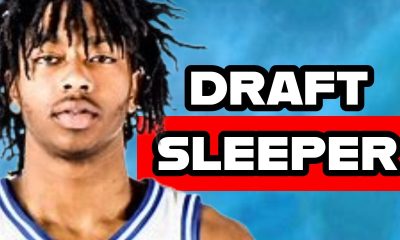
 College Sports2 weeks ago
College Sports2 weeks agoDuke basketball's Isaiah Evans on 2025 NBA Draft early entry list
-

 Fashion2 weeks ago
Fashion2 weeks agoHow to watch Avalanche vs. Stars Game 7 FREE stream today
-

 High School Sports1 week ago
High School Sports1 week agoWeb exclusive
-

 Sports1 week ago
Sports1 week agoPrinceton University
-

 Sports7 days ago
Sports7 days ago2025 NCAA softball bracket: Women’s College World Series scores, schedule
-

 Motorsports1 week ago
Motorsports1 week agoBowman Gray is the site of NASCAR’S “Advance Auto Parts Night at the Races” this Saturday
-

 NIL1 week ago
NIL1 week ago2025 Big Ten Softball Tournament Bracket: Updated matchups, scores, schedule
-
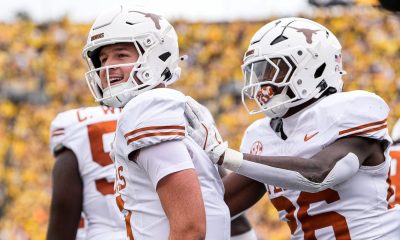
 NIL3 weeks ago
NIL3 weeks agoHow much money will Quinn Ewers make in NFL? Salary, contract details
-

 Motorsports1 week ago
Motorsports1 week agoMOTORSPORTS: Three local track set to open this week | Sports
-
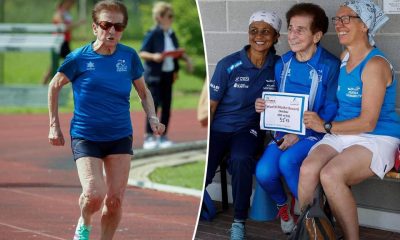
 Sports3 weeks ago
Sports3 weeks agoItalian woman, 91, breaks running record — what makes her body different, according to doctors


